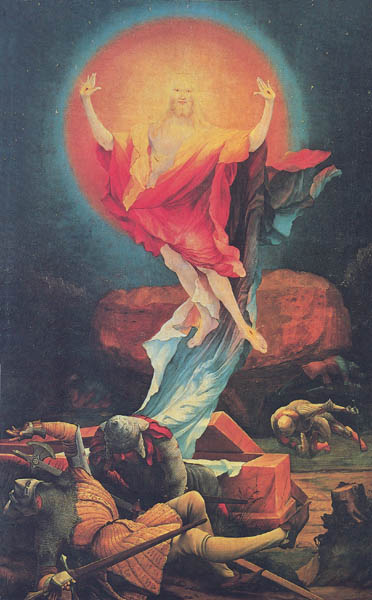Image Details

Scala/Art Resource, New York, NY
The Resurrection, by Matthias Grunewald. The resurrected Jesus bursts forth from his tomb, stunning the soldiers (two in the foreground and two in the background at right) who guard his body on Pilate’s orders (Matthew 27:65). Floating into the starry night sky, with a golden-orange orb like a magnified halo behind him, Jesus appears radiant and triumphant as he displays the glowing wounds in his hands, feet and side.
Painted by the German artist, Matthias Grunewald, between about 1512 and 1515, “The Resurrection” and three other panels decorate the Isenheim Altarpiece. Originally in the church of the Hospital of Saint Anthony, near Colmar, France, the work now resides in Colmar’s Musee des Unterlinden.
Although we have no scriptural account of the actual moment of resurrection, Grunewald’s imaginary re-creation of the event expresses the significance and intensity of feeling that Christians attach to it. Always a popular subject for scholarly investigation, Jesus’ resurrection has sparked an explosion of research in the last ten years, with results that Professor Malcolm L. Peel surveys in the accompanying article.
